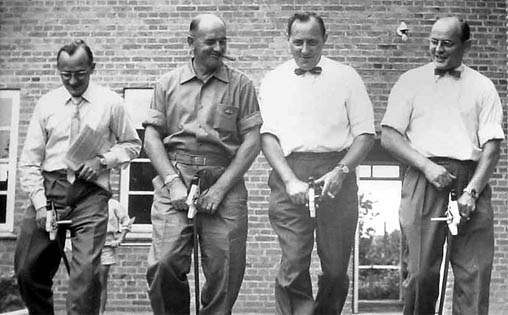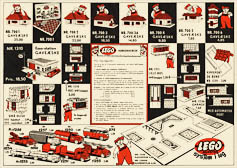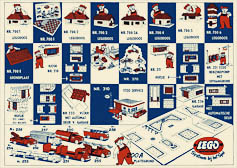Jubilee Year
Lego was now 25 years old and the company celebrated its anniversary with an elaborately staged Silver Jubilee celebration in Billund. For the festivities journalists and other dignitaries were flown in from Copenhagen to the Vandal air base, just south of Billund. The celebration, which included a marching band, served as a tribute to the company and the effect it had on central Jutland.
To serve as a representative symbol of the company, Lego chose not the Automatic Binding Bricks or the System of Play but a wooden toy — the hobby horse. Their slogan for the celebration: “We’ve always tried to keep a ‘horse’s head’ in front of the competition by marketing quality toys!”
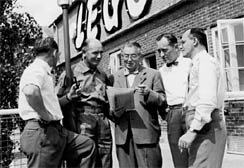
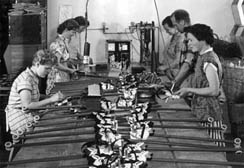
Images from the silver jubilee, 1957
The celebration would also serve as a final tribute to Ole and the company he had built.
After his first stroke in 1951, Ole’s health began a steady decline and by 1957 it had deteriorated to the point where he could no longer participate in the business. The company was reorganized; Godtfred was appointed Managing Director, Karl Georg the Director of plastics production and Gerhardt the Director of wood products manufacturing.
Ole spent time during the year on a convalescent holiday in Germany and finally, on 11 March 1958, he died of a cerebral hemorrhage. He was laid to rest in the Grene cemetary.
Ole had founded his business with the typical Danish Lutheran traits of hard work and loyalty. The result was an insistence on quality that was noticed first by the local farmers and later throughout Denmark. He also had an unshakable self confidence and optimism, often bordering on the irrational, and it was this alone that allowed the company to survive catastrophic setbacks: a global depression and later, a world war. He was also a maverick, typically ignoring the advice of those around him, and invested in new tools, technologies and ever larger factories. Against virtually all odds he succeeded and by the time of his death more than 140 employees worked for the company in Billund. A company poised on the verge of global success.
Ole and his company also left a huge impact on the local community. As early as 1944 he was building low-cost housing for his employees and by the 1950’s was building mission houses and lodging to attract more qualified people to the city. After his death a road in Billund was renamed Ole Kirks Vej in his honor. His legacy in the community continues to this day: In 1964 the Ole Kirks Fond (Foundation) was established in his honor to finance local community initiatives. Over the years the foundation has been responsible for many public buildings in Billund.
Continued Expansion
After Ole’s death Godtfred was named to head the company and the leadership had finally transitioned to a second generation. Godtfred continued to expand sales in Europe; new sales companies were set up in Switzerland and France and distributors were found in the Netherlands, Austria, Belgium, Italy, and Portugal.
Over time these independant distributors would be replaced by sales subsidiaries, often with the sales agent as the new manager.

